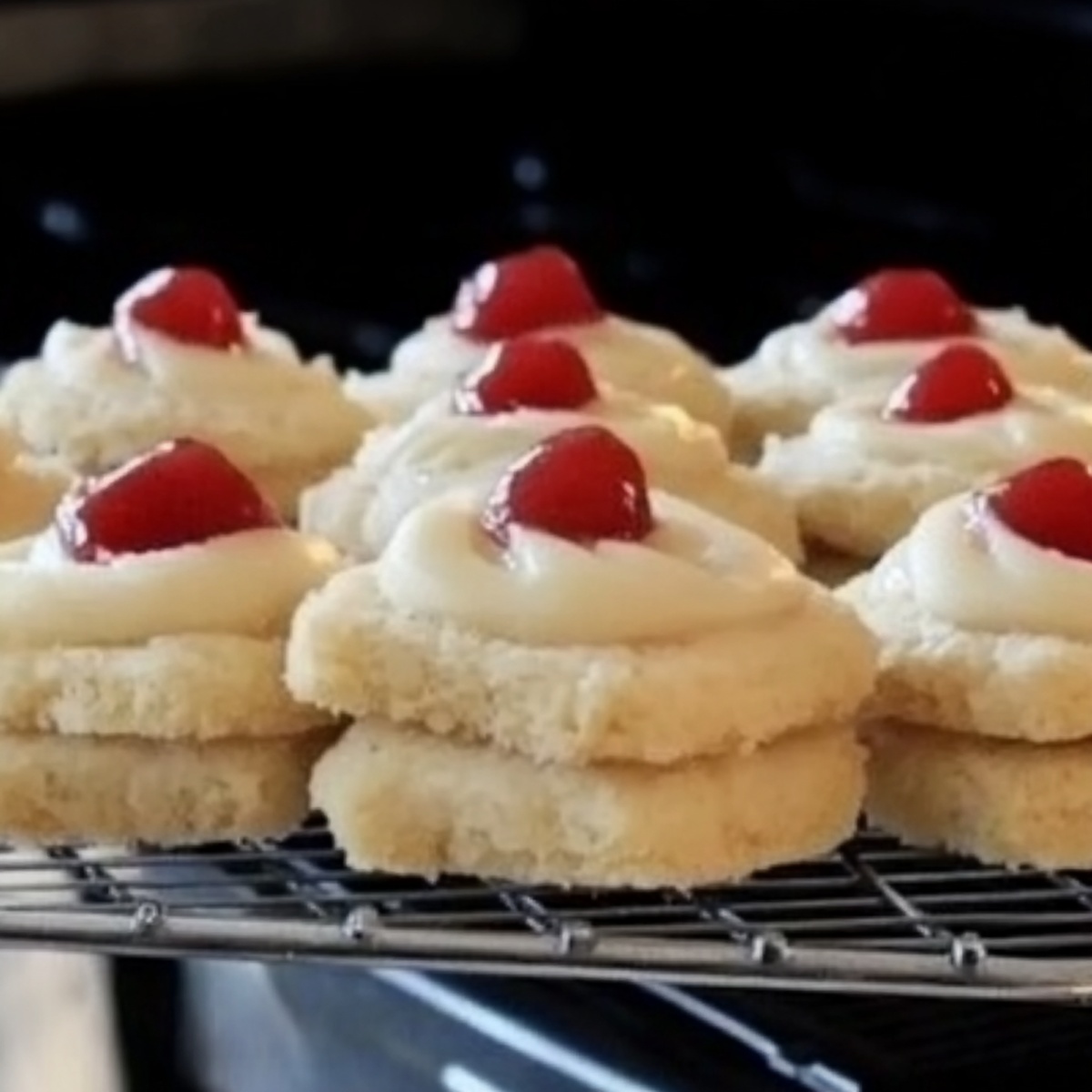Melt-In-Your-Mouth Shortbread Recipe to Enjoy
When butter meets flour in this melt in your mouth shortbread recipe, magic happens in the kitchen.
Sweet crumbs dance with delicate precision.
Generations of bakers have cherished this classic treat for its simplicity and rich flavor.
Scottish bakers perfected these delectable cookies centuries ago.
Crisp edges and tender centers define true shortbread excellence.
Each bite promises a buttery embrace that melts smoothly on your tongue.
Baking these cookies will fill your home with warmth and memories.
Quick Recipe Overview
What You’ll Need For Melt In Your Mouth Shortbread
For Base Ingredients:For Flavor Enhancers:For Structural Ingredients:Kitchen Essentials For Melt In Your Mouth Shortbread
How To Bake Melt In Your Mouth Shortbread With Ease
Warm up your kitchen companion to a cozy 325F. Grab a baking sheet and dress it in parchment paper, creating a smooth runway for your cookie magic.
In a spacious mixing bowl, dance the softened butter and powdered sugar together. Whip them into a cloud-like blend that’s light as a whisper, letting their chemistry create pure happiness.
Introduce a splash of vanilla, letting its aromatic essence weave through the creamy mixture, adding depth and warmth to your soon-to-be shortbread.
Slowly welcome flour into the party, folding it gently into the buttery base. Let the ingredients mingle and merge into a tender, soft dough that promises melt-in-your-mouth moments.
Shape your dough into delicate little rounds or roll it out like a delicate canvas. Place these sweet treasures on the prepared baking sheet, giving them just enough personal space.
Slide the tray into the waiting oven. Watch as your cookies transform, their edges turning a gentle golden hue – a sign of deliciousness to come.
Patience is key. Let the cookies rest momentarily on the baking sheet, then transfer them to a cooling rack where they can breathe and settle into their crisp, tender personality.
Pro Tips To Nail Melt In Your Mouth Shortbread
Serving Melt In Your Mouth Shortbread With Style
Store Melt In Your Mouth Shortbread To Keep It Tender
Print
Buttery Shortbread Recipe
- Total Time: 25 minutes
- Yield: 23 1x
Description
Delectable Scottish shortbread melts in your mouth with buttery, crumbly perfection. Crisp edges and rich flavor make this classic treat an irresistible companion to afternoon tea or coffee moments you’ll savor.
Ingredients
- 2 cups (250 g/8.8 oz) all-purpose flour, sifted
- 1 cup (225 g/8 oz) unsalted butter, softened
- ½ cup (60 g/2.1 oz) powdered sugar, sifted
- 2 tbsps cornstarch (for extra tenderness)
- 1 tsp vanilla extract
- ¼ tsp salt
- Melted chocolate (for dipping edges)
- Sprinkled sugar or sprinkles
Instructions
- Preparation: Preheat oven to 325F (160C) and line a baking sheet with parchment paper or silicone mat, creating an ideal baking environment.
- Creaming: Utilize an electric mixer to whip softened butter and powdered sugar until the mixture transforms into a cloud-like, pale composition with exceptional volume and lightness.
- Flavor Infusion: Integrate vanilla extract thoroughly into the butter mixture, ensuring a uniform and aromatic distribution of flavor throughout the dough.
- Dough Formation: Carefully combine sifted flour, salt, and cornstarch into the creamy base, mixing on low speed until a tender, cohesive dough emerges with a smooth, consistent texture.
- Shaping and Positioning: Elegantly shape the dough by either rolling into delicate spheres or flattening to a uniform 1/4-inch thickness. Precisely arrange cookies on the prepared baking sheet, maintaining slight spacing between each piece.
- Baking Technique: Transfer the baking sheet to the preheated oven and bake for 12-15 minutes, monitoring carefully to achieve a subtle golden edge without compromising the delicate nature of the shortbread.
- Cooling Process: Allow cookies to rest on the baking sheet for 5 minutes, facilitating initial setting, then transfer to a wire cooling rack to complete the cooling journey.
- Finishing Flourish: Elevate the visual and gustatory experience by embellishing the cooled shortbread with an optional chocolate dip, intricate icing drizzle, or a gossamer dusting of powdered sugar.
Notes
- Temperature Precision: Use room temperature butter for smoother mixing and consistent cookie texture, avoiding cold or melted butter that can disrupt the delicate shortbread structure.
- Flour Handling: Sift flour and cornstarch together to eliminate lumps and create a lighter, more uniform dough that ensures a melt-in-your-mouth consistency.
- Gentle Mixing: Mix ingredients on low speed to prevent overworking the dough, which can develop gluten and result in tougher, less tender cookies.
- Baking Watchfulness: Monitor cookies closely during the last few minutes of baking, aiming for a pale golden edge rather than a dark brown color to maintain the classic shortbread delicacy.
- Prep Time: 10 minutes
- Cook Time: 12-15 minutes
- Category: Desserts, Snacks
- Method: Baking
- Cuisine: Scottish
Nutrition
- Serving Size: 23
- Calories: 140
- Sugar: 2 g
- Sodium: 0.1 g
- Fat: 10 g
- Saturated Fat: 6 g
- Unsaturated Fat: 4 g
- Trans Fat: 0 g
- Carbohydrates: 14 g
- Fiber: 0.5 g
- Protein: 1 g
- Cholesterol: 30 mg




Liam O’Sullivan
Founder & Culinary Content Creator
Expertise
Recipe Development, Traditional Irish and European Cuisines, Food Styling and Photography, Culinary Education
Education
Dublin Institute of Technology (DIT) – School of Culinary Arts and Food Technology
Ballymaloe Cookery School
Isabella brings a global spark to the Craft Meats table. Born in Florence and trained at the Apicius International School of Hospitality, she blends classic Italian flavor with modern writing that’s easy to follow and hard to forget.
Her additional training at the Italian Chef Academy fueled her love for well-crafted dishes, especially ones that spotlight beautiful cuts of meat.
She’s a food writer with heart, and a deep love for storytelling through single recipes. Her goal? To help you cook with more confidence and a little more joy, no matter where you start.